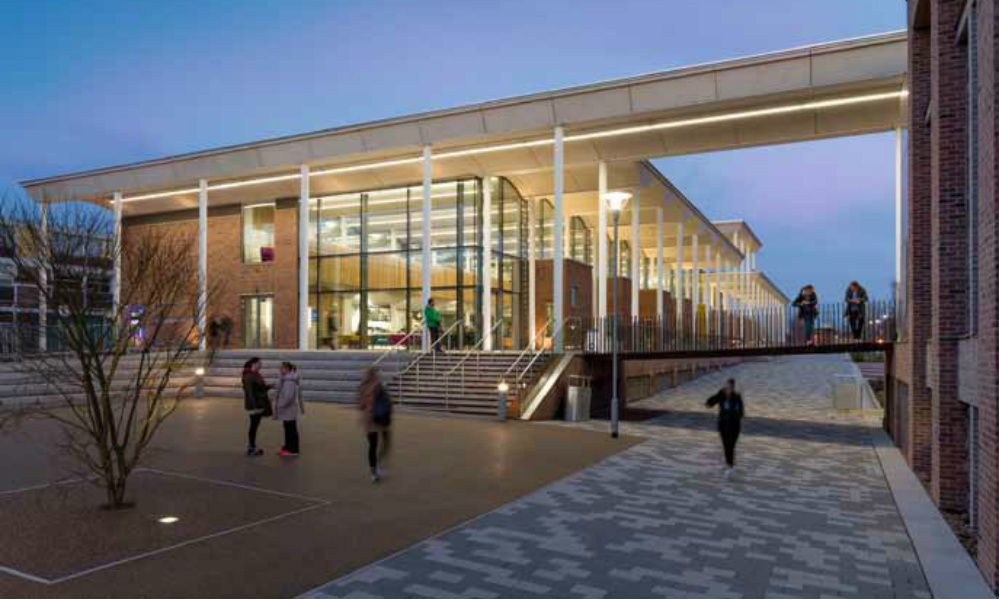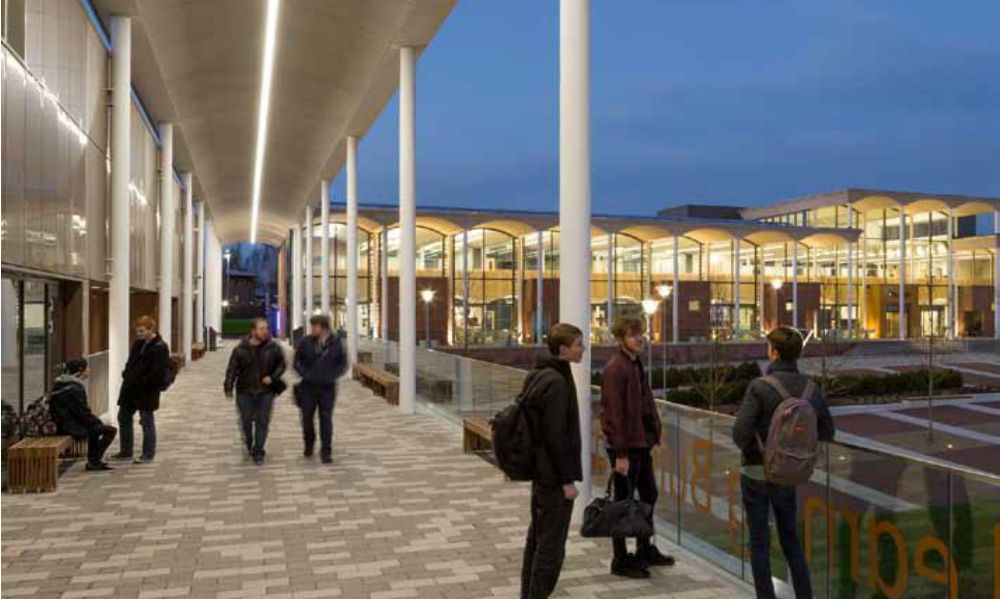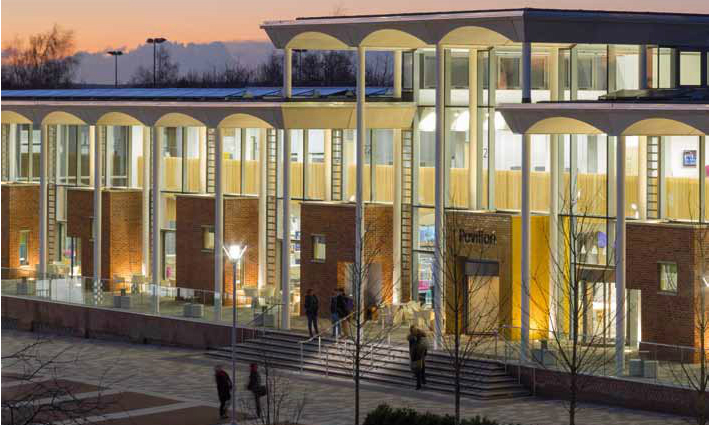THE IMPACT OF THE EVOLVING STUDENT EXPERIENCE ON CAMPUS DEVELOPMENT
The concept of student experience is integral to modern campus developments and has undoubtedly been driven by the digital age. David Strong, executive director at built environment consultancy Curtins, shares how this evolving student experience has changed how architects must approach university campus developments.
It’s no secret that to be popular with students and therefore be considered a ‘successful’ campus by the institutions in charge, a university campus must support a positive experience and quality of life for its students. There are many different elements for an architect to consider, but creating a campus that is physically and socially connected ensures that it works as a whole entity.
As recently as ten years ago, students relied on a printed prospectus and any first-hand experience they were able to gain on open days across a few days per year. In 2019, everything they want to know and more is available within a few clicks. They are able to look at rankings and feedback given by others at any time, see photos and videos, and even virtually tour the campus using Google maps. All of this means that students are understandably pickier when selecting their preferred university – not to mention increases in tuition fees, and therefore expectations of higher standards in regards to facilities from all sides. This melting pot of expectation evolution provides further challenges to architects working on campus.
The international student market continues to grow, with five million students currently studying outside their home country, a number which is set to grow to eight million by 2026. It’s easy to see why high standards are expected – wherever they choose will essentially become their full-time home whilst in the UK. Their parents also of course want greater reassurances that their child is secure and in the best possible environment for them to thrive.
However, it is crucial that universities achieve the balance between education and social elements. Whilst feeling part of a community is important to a successful university experience, students choose a university based on which they believe will give them the training and knowledge to allow them to pursue a successful career upon graduating. This means that new facilities are required and expected to be cutting edge – both physically and in terms of the services within them.
This strive towards connectivity on every level is being reflected in the type and design of facilities being constructed on university campuses in the modern day, with recent years seeing a significant shift towards more holistic schemes.
In terms of delivering a successful experience and creating a campus that stands out, we are seeing a much greater emphasis on the interrelationship between buildings. More commonly than not, we are briefed on projects that must work to complement the campus as a whole with infrastructure and the movement of those using it vital to design considerations.
This may mean that an educational institution will invest in a building that is solely for the purpose of providing students with a sense of centrality and encouraging them to socialise and be active in the community. A good example of giving a campus a central point is The Heart of the Campus project at Nottingham Trent University (NTU), for which Curtins provided civil and structural engineering.
This award-winning project sat within the existing NTU Clifton campus and created a vibrant central pavilion with a new ultramodern teaching block, a fully refurbished refectory and full external landscaping. The design of the new building took advantage of the natural slope on the site and created a south-facing covered colonnade terrace which overlooked the other buildings on campus. The result has been a clear focal point located in a central location, which until that point the campus had been missing.
Of course the development of any new building means balancing the needs of end-users and the university and aligning those with both the brief, and crucially the budget. A successful scheme will create what is increasingly being called a ‘sticky campus’. New buildings must naturally integrate and work alongside existing buildings on the wider campus, ensuring that students are encouraged to stay and spend their time – and money – on site, and more importantly creates a feeling of community and inclusivity.
Affordability is an ongoing topic for debate; there is an ever-present challenge of striking a balance between accommodation that is at the right price-point for the target market and providing high-grade living spaces that both meet the growing expectations of students and give the institution an attractive advantage over its competitors.
There is a definite art to achieving the delicate balance of these different requirements and this is what makes working in the education sector as a built environment consultancy both exciting and unique. Not only does our work have to meet the needs of the end-user, those paying the fees and the university itself, but potentially an additional stakeholder which is more often than not a business of some kind. We are certainly seeing an increase in the years between higher education and industry in recent years – for example the University of Warwick and ongoing investment from the big names in the automotive industry.
With the education sector continuing to grow and remain of great importance for attracting the best talent for the country’s employers, in addition to being vital to the UK economy in general, architects and developers must ensure that they work together to create the best possible student experience through their work. The balancing of many ever-moving part is an ongoing challenge in this sector, which brings along with it the huge opportunity to introduce new and innovative solutions, collaborating with others to develop effective design solutions that meet the needs of both students and universities to create the all-important harmonious experience balance.
For more information, please visit https://www.curtins.com/




